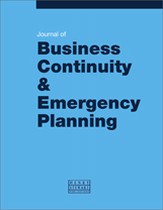An integrated system for disaster preparedness and response
Abstract
Kaiser Permanente, the USA’s largest not-for-profit integrated healthcare provider, has developed a hybrid emergency preparedness and response system. It consists of a tiered structure of national ‘workgroups’ and traditional physical command centre operations. The workgroups provide integration and coordination across a large organisation while allowing for necessary regional operational flexibility. Workgroup membership taps the best available expertise in a functional area, drawn from all levels and all regions, so as to best represent all interests of a divergent, widespread organisation. Workgroups exist in ‘standby’ until a threat emerges, then are activated as needed, excepting the core clinical workgroup which meets at least monthly to track potential risks to the organisation. These workgroups promote internal consistency, represent the organisation to outside entities, and develop tools, templates and protocols that regions can adapt, adopt and implement through a traditional, operational system of regional and medical centre and clinical emergency command centres. Developed in response to the anthrax terrorism in the early 1990s, this hybrid system allowed for a rapidly escalated, yet measured response to the recent H1N1 outbreak and could be a template for application in other organisations with similar needs.
The full article is available to subscribers to the journal.
Citation
Thompson, Dale L. (2011, June 1). An integrated system for disaster preparedness and response. In the Journal of Business Continuity & Emergency Planning, Volume 5, Issue 2. https://doi.org/10.69554/FFMS2032.Publications LLP
